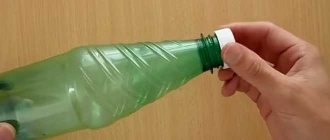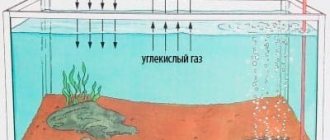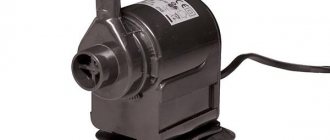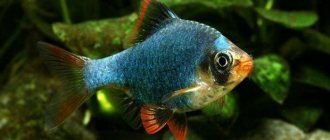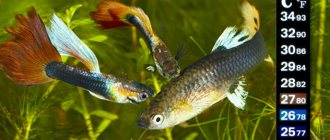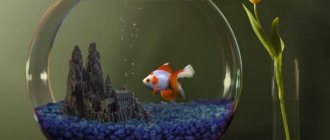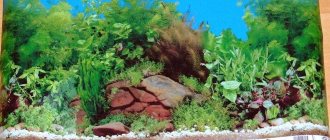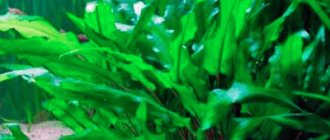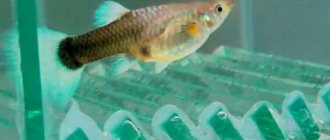Why do you need a compressor in an aquarium?
The need for such a device in a glass aquarium is due to the fact that it is a closed space. As a result, there is a lack of oxygen, which has a bad effect on fish and plants. Due to their waste products, dust, film on the surface and small debris, the water can become like a swamp. An aquarium compressor is designed to save you from such a situation. It performs the function of aeration - natural saturation of water with oxygen.
What to choose a filter or compressor for an aquarium?
By comparing the filter and compressor for an aquarium, you can highlight their pros and cons.
| Advantages | Flaws | |
| Compressor | High degree of oxygen saturation of water | Accessories in the form of: hoses, valves and nozzles must be purchased separately |
| Possibility of adjusting and distributing air supply | Makes noise when working | |
| Prevents the appearance of stagnant zones in the aquarium | ||
| Filter | Silence | Not all filter models can perform compressor functions. |
| Simultaneous filtration, aeration and mixing of water | Over time, the quality of aeration decreases | |
| In aquariums with a height of more than 50 cm, a “Zone of Death” is formed at the bottom. |
To summarize the comparison, we can say that the filter is enough for a small aquarium volume (up to 50 l). If there are also live plants in the aquarium, a filter will definitely be enough. If the aquarium is large and there are no living plants in it, the filter will not be able to cope with the tasks of the compressor. Despite the fact that compressors are inferior in noise level to filters, they are superior in performance.
How does an aquarium compressor work?
The operating principle of an aquarium compressor is very simple. Air enters the water through the tubes, the pressure of which is regulated using clamps and valves. Completely different parts of the compressor are responsible for bubbles. These are atomizers attached to air tubes.
They create small bubbles, which are also a decorative decoration, especially in combination with lighting, as can be seen in the photo. The sprayers are located at the very bottom. Each rising bubble mixes the water, equalizing its temperature. In addition, the bacterial and dust film on the surface is destroyed.
Adjustable
According to one classification, a compressor for fish can be unregulated or adjustable. In the latter case, the front or side panel of the device housing has a special regulator. By rotating it, you can influence the performance of the compressor, thereby changing the number of bubbles. This increases or decreases the intensity of aeration. An adjustable air compressor can have different types of regulation:
- Electronic. It limits the movement of membranes. The disadvantage is that the electronic part is subject to heating.
- Mechanical. The vibrations of the membranes are limited by the claws or the magnets are moved away from the coil inside the aquarium compressor itself.
- Blocking the output channel. More common option. In this case, the valve located at the transition from the air duct to the sprayer is closed.
Unregulated
An unregulated compressor is simpler in design. It has no additional parts that would affect the power of the device and aeration. Performance remains constant, so energy consumption increases. In addition, the noise from such an aquarium compressor cannot be reduced by reducing its power. In this case, some craftsmen independently install special taps on the air duct tubes, and replace the aerator itself with a regular cooler from a computer.
Why do you need an aquarium compressor?
.
Hello, dear friends!
aquarium compressor
Today we’ll talk about such a necessary thing called an aquarium compressor ! You've probably heard and even seen this device: at Bird Markets, aquarium fish sellers often use a compressor in their aquariums. But why is this aquarium compressor needed? And will you need it? This is what we will talk about in today's article. So!
An aquarium compressor is a special device that serves to enrich water with oxygen. How does this happen? And you yourself take a closer look and you will understand everything: firstly, air bubbles intensively come out of the compressor tube, which is lowered into the water, and as a result, the water is enriched (saturated) with oxygen. And secondly, the compressor creates ripples in the water and thereby increases the surface of contact between water and air, which also saturates the water with oxygen. This procedure (I mean saturating water with oxygen) is also called aeration. Well, the main “advantage” of the compressor is that it mixes the layers of aquarium water. This way, the water in your aquarium will not become rotten and swamp-like.
In what cases is it necessary to use an aquarium compressor? I will try to answer this question as simply as possible. Let's say your aquarium has a volume of 100 liters and a whole colony of fish lives there, say, 50 individuals. Remains of food and waste products of your fish sink to the bottom and begin to rot. You don’t always have the time and energy to change the water in an aquarium often: try changing the water in a 100-liter aquarium at least once and you will understand how troublesome it is! In rotten water, fish experience a great lack of air and may die or get sick. And this is precisely what compressors are designed for such large aquariums: they perfectly saturate the water with oxygen! And since there is oxygen in the water, the health of the fish is safe! However, the compressor does not completely solve the problem: you will still have to change the water in the aquarium, whether you want it or not!
Types of compressors for aquariums
One of the main classifications divides aquarium compressors into three main groups - membrane, piston and pumps. Their differences lie in price, operating principle and noise level. A membrane compressor for fish is also called a vibration compressor. It pumps air by contracting an elastic rubber membrane due to the transmission of vibrations from a magnet inside the device. Pistons operate thanks to an electric motor that drives the piston. The pump is a universal device for aerating and filtering water. It is suitable for large aquariums.
Piston
The operating principle of this type of compressor is based on the movement of a piston that pushes out air. Rotational movements of the shaft are converted into oscillatory ones. This leads to achieving the required air supply power. If your fish live in a bedroom or recreation room, then a piston compressor for an aquarium would be ideal. It doesn't make as much noise, but it's not as cheap as a membrane one. You can use both types of compressors at once. Turn on the piston at night, and the membrane during the day. The latter consumes less energy.
The main advantages of a piston compressor:
- durable;
- almost silent;
- high performance;
- Suitable for large aquariums.
Main disadvantages:
- consumes a lot of electricity;
- expensive.
Membrane
Otherwise, a membrane compressor for an aquarium works. It forces air to move from a chamber connected to the membrane. It shows pressure differences. They are created due to vibrations of a magnet, which are also transmitted to an elastic rubber membrane. Its advantage is low energy consumption. In addition, such a device can be repaired, although this will not have to be done often. It is also a relatively cheap device and can serve more than one aquarium. The disadvantage is low power and high noise levels.
Types of compressors
According to the main classification, compressors are divided into piston and membrane. The differences lie in the cost of the devices and the level of noise they emit.
Piston
The operating principle of this device is based on the movement of the piston.
It pushes out air and directs it into the depths of the water. The device has a higher price than a membrane one, but produces less noise. Piston compressors are ideal for bedrooms and recreation rooms. Their advantages are durability and high performance. These types of compressors are recommended for installation in large-volume aquariums.
The main disadvantages of piston compressors:
- high price;
- high power consumption.
Recently, piezo compressors have competed with piston aerators in terms of noise emission. But they have a significant drawback - they are low-power and are not suitable for installation in aquariums with a volume of 200 liters or more.
Membrane
The movement of air in such devices occurs from a chamber connected to the membrane, in which pressure differences are observed. They occur due to vibrations of the magnet, which are also transmitted to the rubber membrane. The advantage of this type of compressor is its low energy consumption.
Flaws:
- low power;
- noisiness.
Depending on the installation method, internal and external compressors are distinguished. External ones can be installed under containers, therefore they are more aesthetically pleasing, because they do not disturb the composition of the aquatic space. The internal ones are a pump. Its rotating element is installed directly in the container. This allows you to reduce the noise level during operation.
Battery operated aquarium compressor
Aerators for aquariums of any type can be powered either from a 220 volt network or from batteries. The latter option is preferable only for moving long distances or in conditions where electricity often goes out. A battery-powered aquarium compressor is characterized by its high cost, low power and high noise level. They “eat” a lot of energy and work for no more than 4-6 hours. Then you have to buy a new set of batteries. For this reason, you should not choose such a microcompressor if you always have access to power.
How to install a compressor in an aquarium
It is also important to install the device correctly. First you need to decide where it will be located - above the surface of the water or in a special tank outside the aquarium. Installing a compressor in an aquarium, especially a submersible one, is also carried out taking into account the need to clean the device - it is important that there are no problems with temporary dismantling. To eliminate noise from the device, you can place it on foam rubber, or, in extreme cases, foam plastic. The air ducts and sprayer are located at the bottom. You can simply press the tube with a shell or pebble.
- How to make pitted cherry jelly for the winter
- Birch mushroom - beneficial properties and applications. How to brew and drink birch chaga, contraindications
- Coronary angiography of the heart - what is this study? Indications and performance of coronary angiography of the heart and blood vessels
How does it work
During operation, the aquarium compressor pumps air into the chamber and releases it under pressure through a hose lowered into the water. At the end of the hose there is a sprayer that breaks the air flow into small bubbles. To ensure maximum operating efficiency and high-quality mixing of water layers, the sprayers are located at the bottom level.
Possible problems
Due to the fairly simple design of the aerator, if it breaks down, many owners manage to carry out repairs themselves. The most common cause of problems with electronics is a burnt coil. In this case, rewinding will help, however, to avoid repeated overheating, you need to know how many turns there should be on the coil.
Many aquarium owners who are interested in technology create small aerators with their own hands from available materials. Typically, such devices operate on 12 volt AC.
Features of adjustable and non-adjustable aerators
Depending on the design features of the aerator, there are models with adjustable air flow and unregulated compressors, each of them has its own pros and cons.
- Compressors with the ability to change the aeration intensity have a regulator on the housing that allows the owner to set the appropriate performance. Models with adjustable air supply are more expensive, but allow you to change the level of aeration depending on the volume of the aquarium, the number of fish and the level of oxygen in the water.
- An unregulated compressor produces a constant air flow. This type of device is characterized by its low cost, simplicity and reliability of design.
The best compressor for an aquarium
The rating of aquarium compressors includes those models that are in high demand for their characteristics and optimal price-quality ratio. You can study the description of these products, the features of their operation, the pros and cons, and the prices indicated for Moscow. The following compressor models were included in the rating:
Prime PR-H-6900
Manufacturer:
- China.
Features:
- Installed above the aquarium, otherwise requires a check valve.
Characteristics:
- productivity – 2x120 l/hour;
- number of channels – 2;
- power – 2.5 W;
- weight – 375 g.
Main advantages:
- compact size;
- beautiful body, small dimensions;
- quiet work.
Minuses:
- No.
Price:
- 630 rubles.
SCHEGO IDEAL
Manufacturer:
- Germany.
Features:
- very stable in continuous use.
Characteristics:
- productivity – 250 l/hour;
- number of channels – 2;
- power – 5 W;
- weight – 560 g.
Main advantages:
- compact size;
- high reliability;
- quiet work.
Minuses:
- No.
Price:
- 1200 rubles.
aPUMP
Manufacturer:
- AquaLighter (Ukraine).
Features:
- very stable in continuous use.
Characteristics:
- productivity – 100 l/hour;
- number of channels – 1;
- power – 1.5 W;
- weight – 236 g.
Main advantages:
- miniature;
- can be attached to a suction cup;
- Includes silicone hose and sprayer;
- very quiet operation.
Minuses:
- No.
Price:
- 1200 rubles.
SCHEGO WS 2
Manufacturer:
- Germany.
Features:
- can pump air to a depth of up to 2 m.
Characteristics:
- productivity – 250 l/hour;
- number of channels – 2;
- power – 5 W;
- weight – 600 g.
Main advantages:
- almost complete absence of noise during operation;
- possibility of hanging;
- regulator to control the intensity of aeration.
Minuses:
- No.
Price:
- 1600 rubles.
Barbus, 2 channels, 250 l/h, 12 W
Manufacturer:
- China.
Features:
- The battery lasts up to 12 hours, which can then be recharged.
Characteristics:
- productivity – 240 l/hour;
- number of channels – 2;
- power – 12 W;
- weight – 2250 g.
Main advantages:
- almost complete absence of noise during operation;
- works from mains or battery;
- high wear resistance;
- regulator for air flow control – 3 levels.
Minuses:
- heavy and voluminous;
- consumes a lot of electricity.
Price:
- 3200 rubles.
